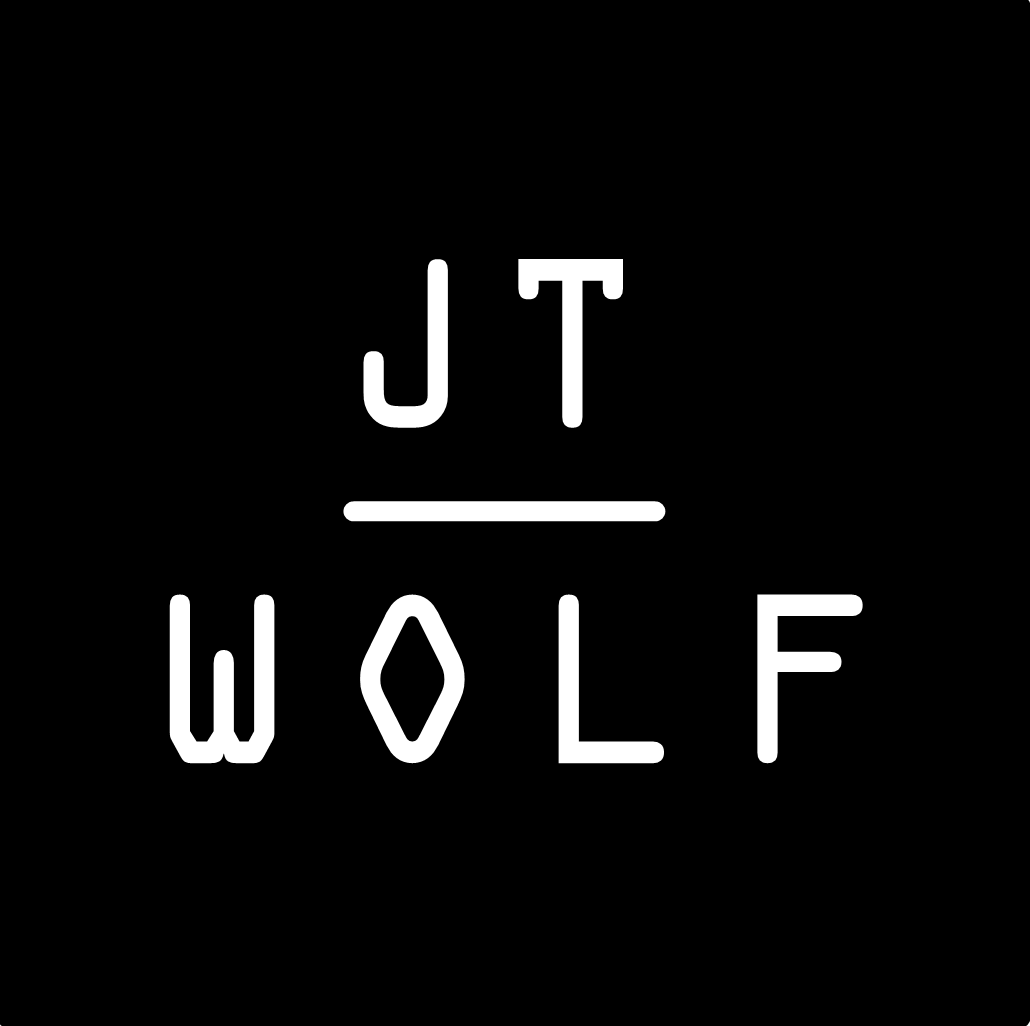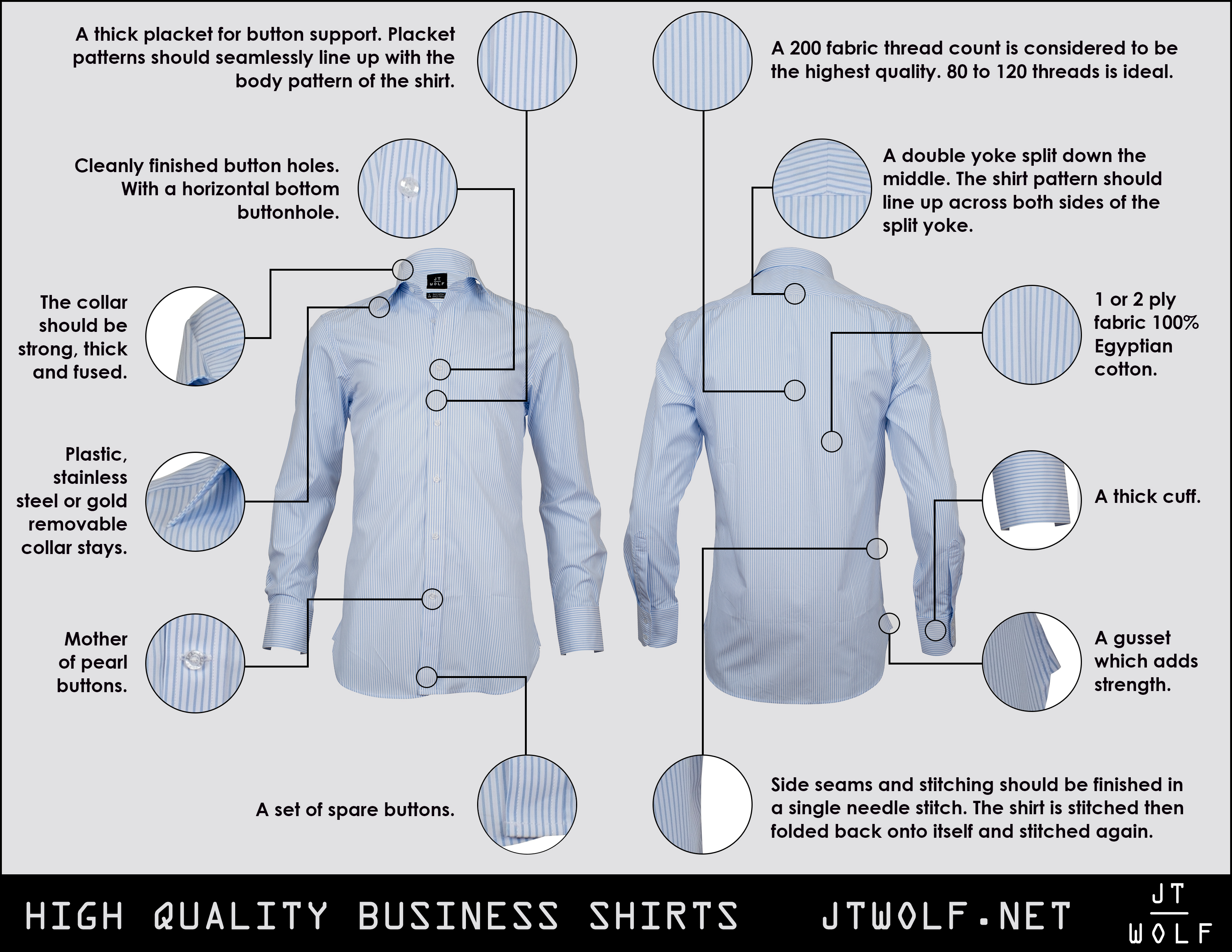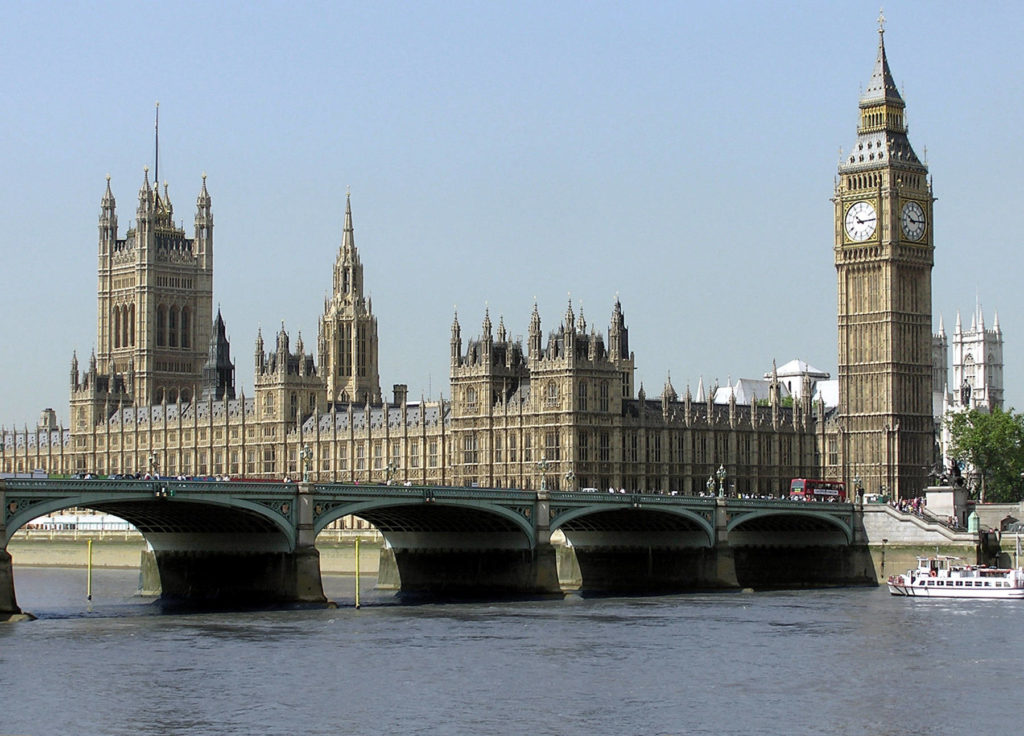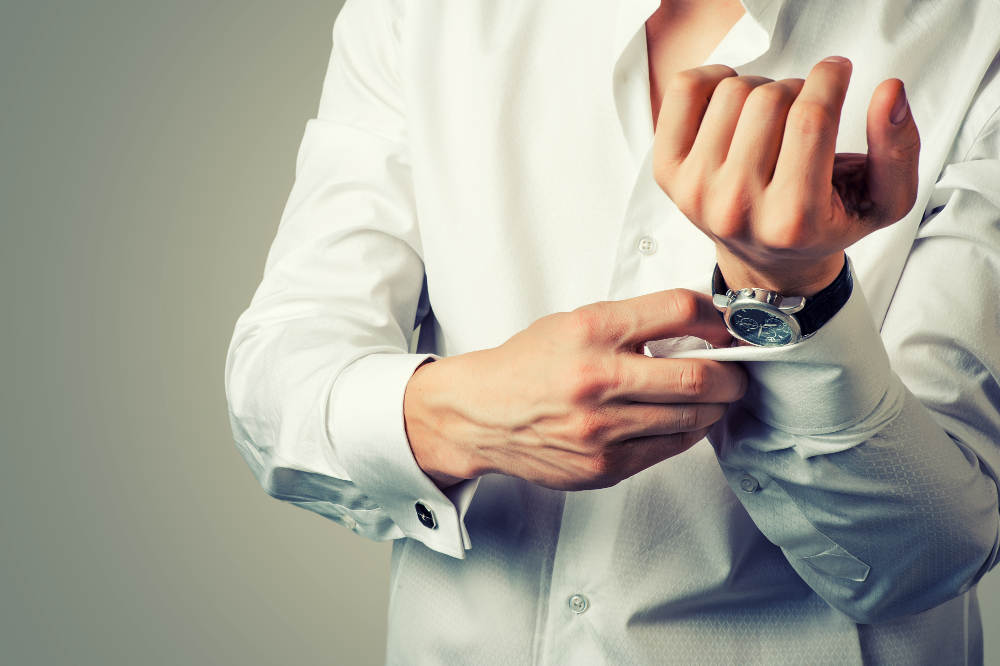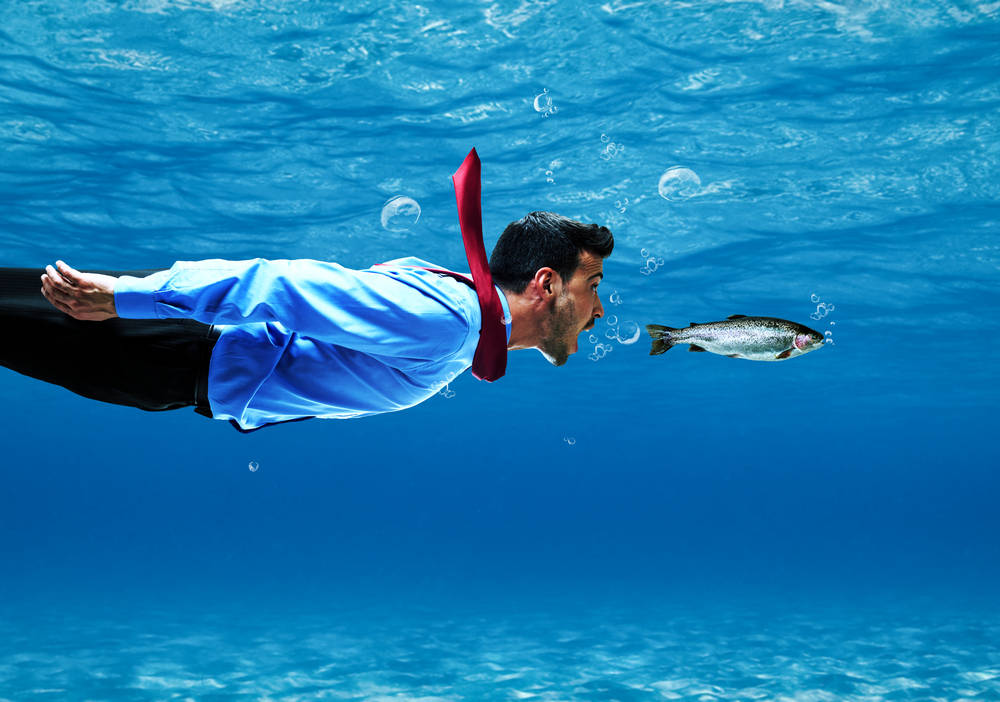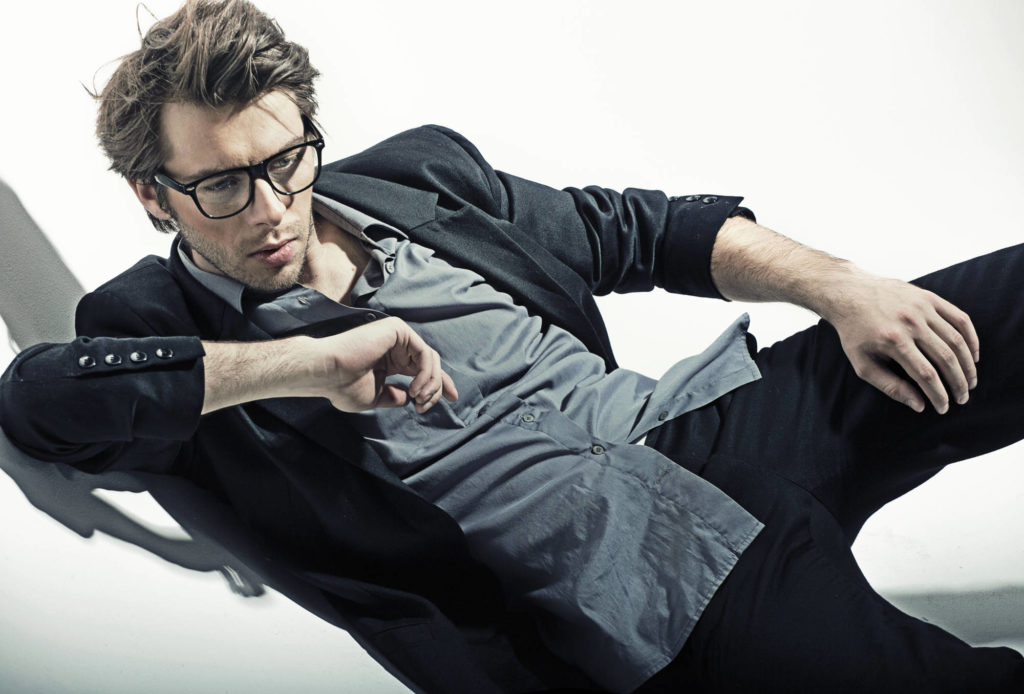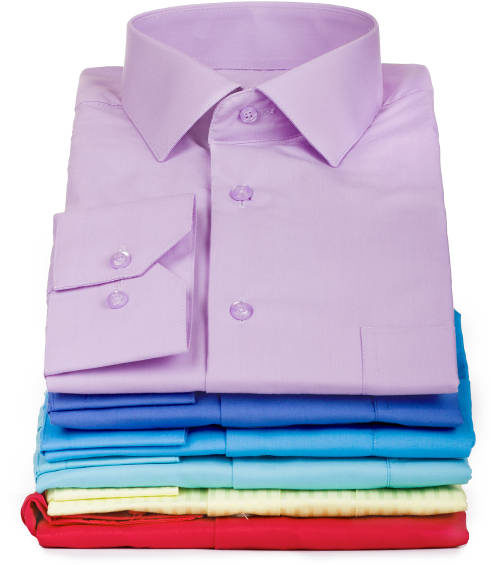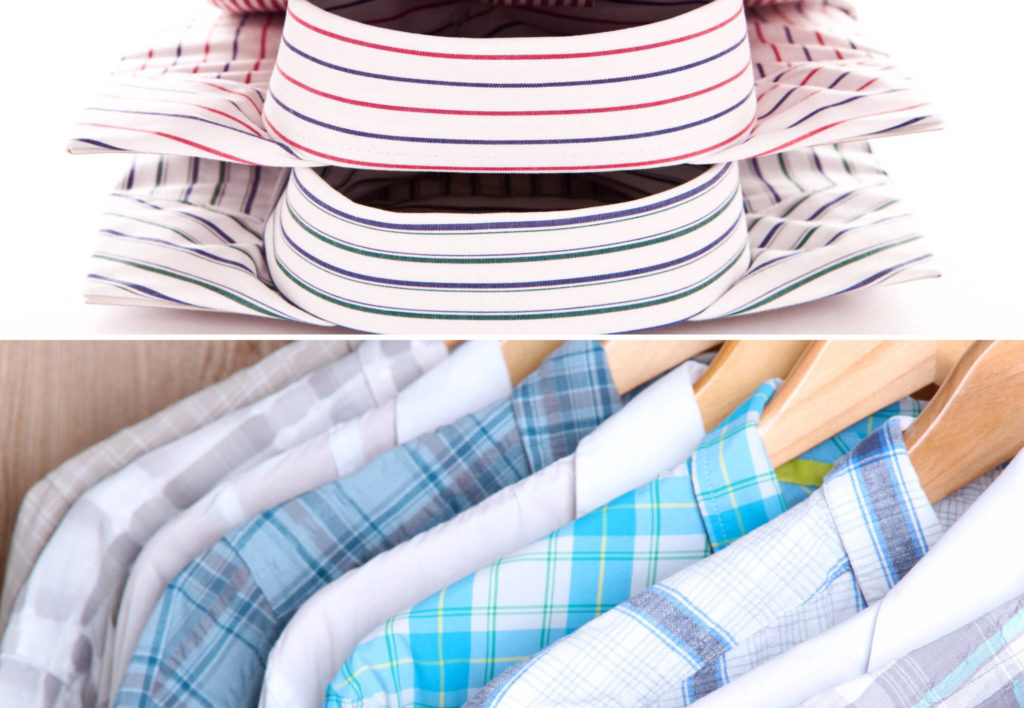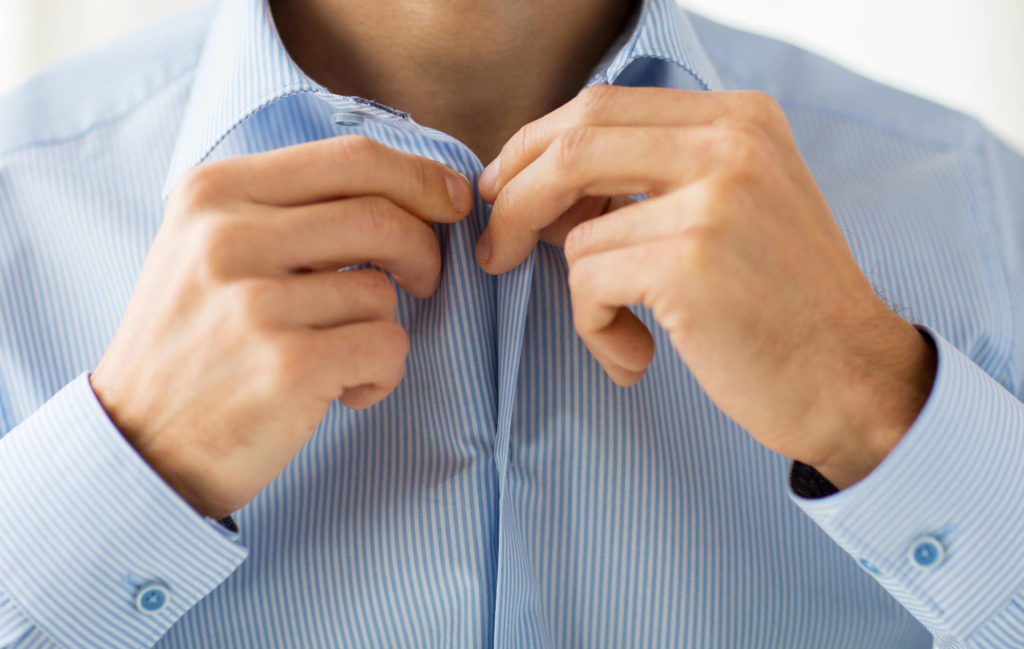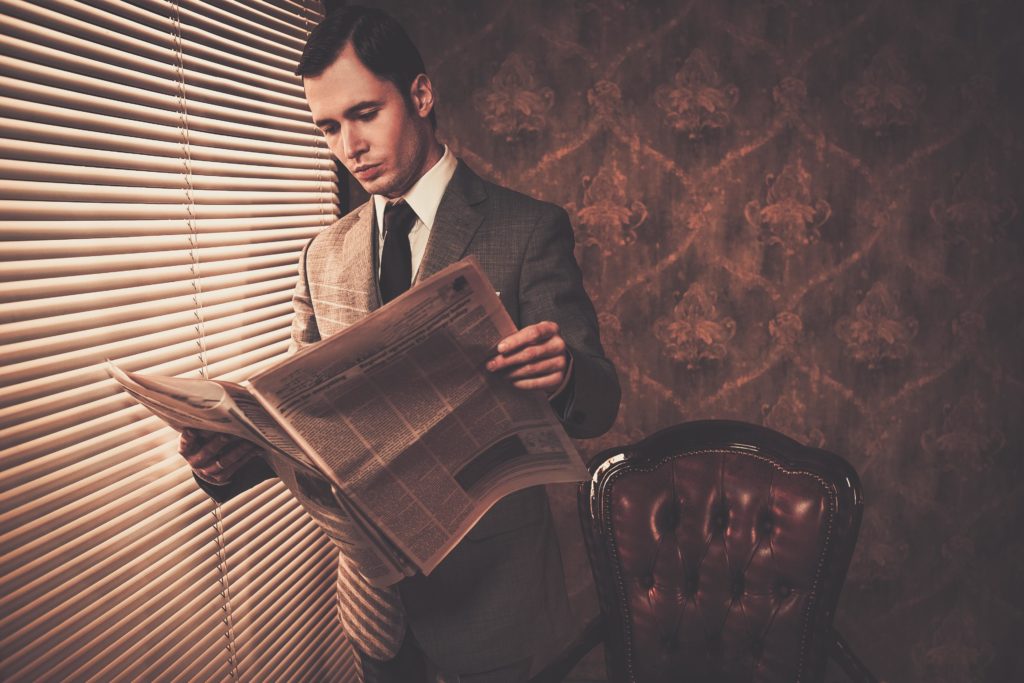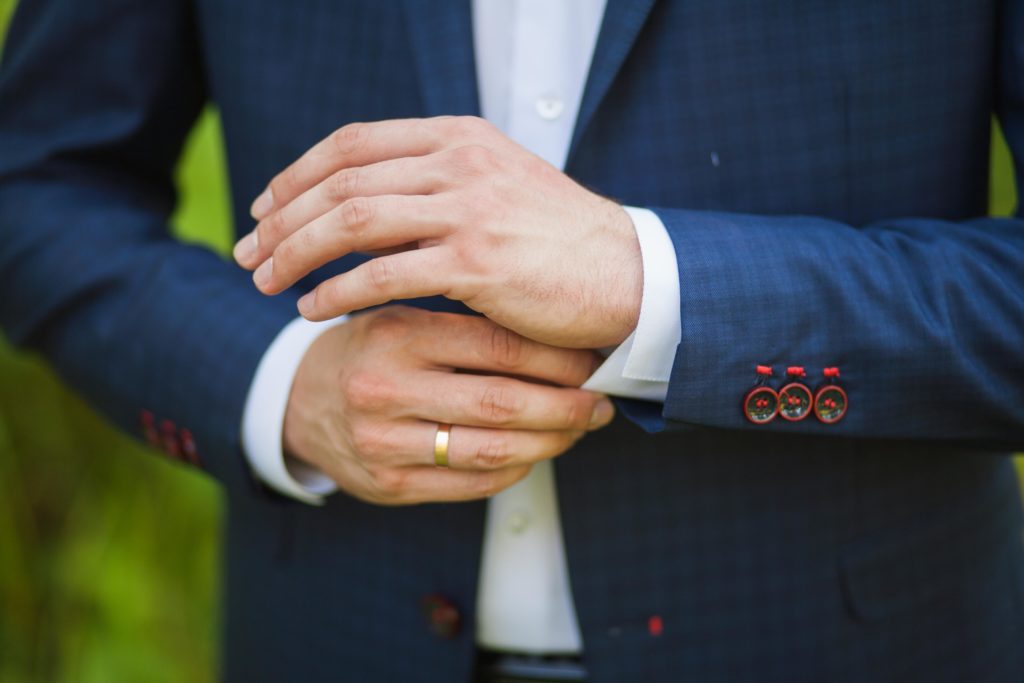What makes a great quality business shirt?
Seems like an easy question to answer. Good fabric, big brand name, stylish colors. These aspects go into creating great quality business shirts, but if you delve into the inner workings of top quality business shirts you may be surprised that some of your big-name brands are cutting corners.
Don’t always assume that the business shirt dollar value equates to quality shirt. I will cover some areas to help you pick out or find the best business shirt in the store.
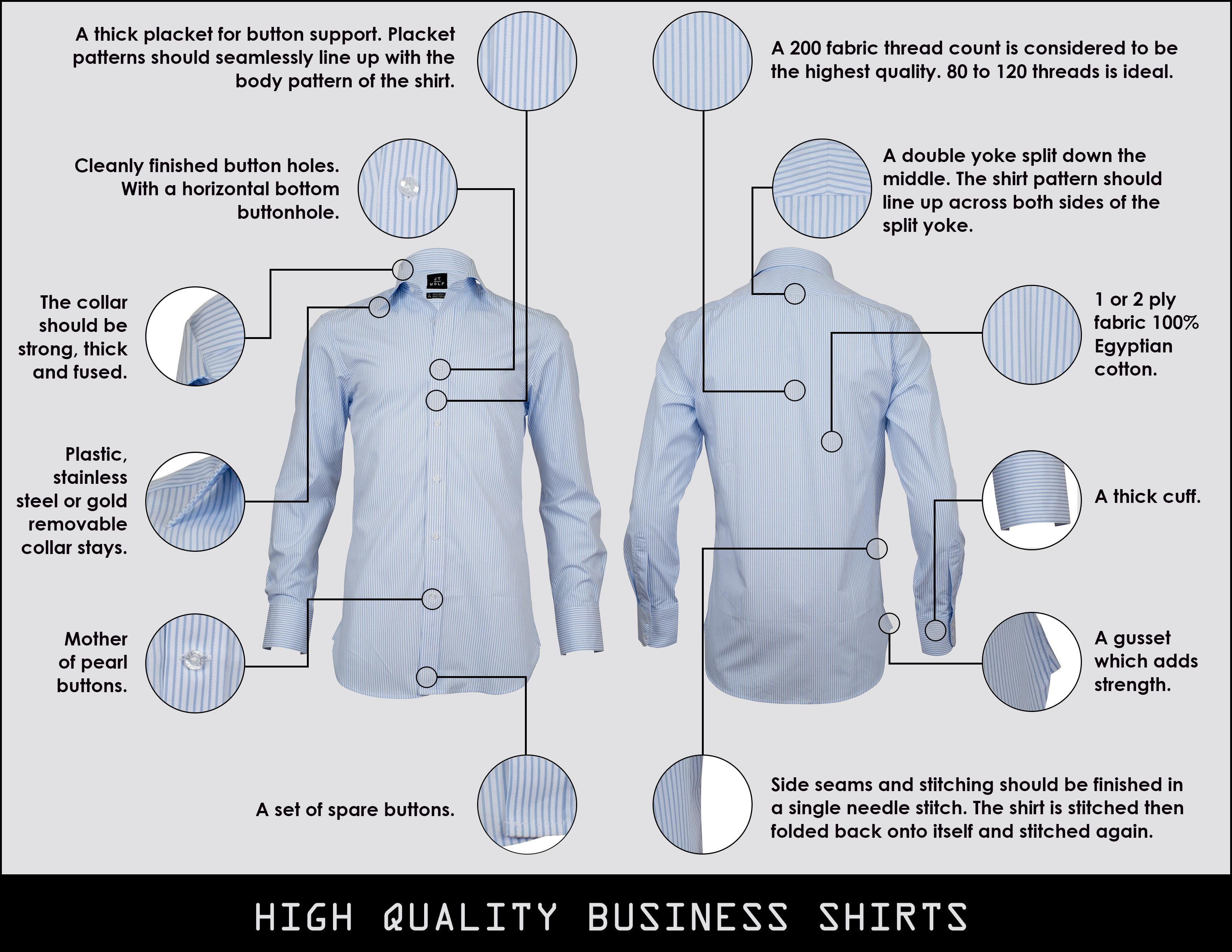
What a business shirt stands for?
Business shirts have come along way over the past century. Originally business shirts were the base of your attire, predominantly custom made with many varying looks. Business shirts were a symbol of who you were, your social status and wealth. Back then this was a big part of life and dress shirts helped you convey your status to the outside world. Fast forward 50 years to the age of manufacturing and suddenly tailored shirts were out and classic fitting white shirts in. Companies realized the power of manufacturing huge amounts of business shirts in a standard style and sizes. This allowed customers to purchase a shirt instantly rather than waiting for a fitted shirt to be custom made. By doing this we all lost a massive piece of history on how we used to wear dress shirts. Nowadays business shirt manufactures are aiming to win your business and separate themselves from the rest of the industry by returning to the old ways. You can find business shirts made in thousands of fabrics, with big amounts of variations of collars, cuffs, pleats and plackets.
Fabric
This is the beginning of a quality business shirt, it all starts with the fabric. There are a large amounts of fabric types available from Broadcloth, Twill, Pinpoint, Chambray, Denim, Dobby, End on End, Flannel. I will elaborate further on these fabric types in a future blog. The main building block is Egyptian cotton. 100% Egyptian cotton in single or 2 ply best suits a dress shirts. The fine long fibers create a soft weave maintaining strength and durability and shirt longevity giving you maximum breathability and comfort. Thread count should be around 80 to 120 threads anything above 200 threads is considered top notch.
The fabric pattern should line up, this is the hallmark of a quality business shirt. This is a great way to quickly check shirt quality. The pattern should match from the shoulder through to the sleeve, sleeve to cuff placket, the front of the shirt and the button placket and the pocket if included. The ability to match these main areas is quite difficult and is a sign of quality manufacturing, and with anything manufactured the more time spent on the little things the increase base cost of the product.
Stitching
A little bit hard to analyze by eye but the stitching is a tell-tale sign of quality made business shirts. The stitching that is visible should be tight, bunched and evenly stitched. A quality dress shirt could have around 25 stitches per inch. The heavier density in stitching points towards a more durable business shirt and a classier look.
Dress shirts can be made with either single needle stitching or double needle stitching. Single needle stitching represents higher quality again due to time committed in manufacturing and the result is cleaner finished business shirt. A single needle stitch is hard to master and only top manufacturers or tailors attempt this. A single row of stitches is sewn, the fabric is then folded back onto itself and sewn again. Keeping the fabric straight and even in this process is the trick. Double needle stitching is usually confined to a more casual shirt.
Collars
Collars are important and the right situation calls for the right collar, they come in two types; fused and non-fused and both collars are called for in different situations. If you have a button-down collar or more casual shirt, then head towards the soft non-fused collar but in most scenarios when you’re wearing a business shirt and tie you want a stiff crisp fused collar. Removable collar stays with a fused collar shirt is the first check I look for when inspecting the quality of business shirts. Generally, stays come in plastic, stainless steel and for the top 1% gold. Stays keep the collar flat, pointing down and straight.
The collar points should align perfectly with each other. Some people say that beauty lies in symmetry and this is the case with collar points. An uneven collar point can throw out your entire look. There is a large amount of collar styles available and often styles come in and out of fashion.
Complementing your face is the most important function of your collar. I have no doubt that certain style collars suit a certain type of face. Collars come in many different styles, the main styles being button down, spread, tab, cutaway, classic point and wingtip.
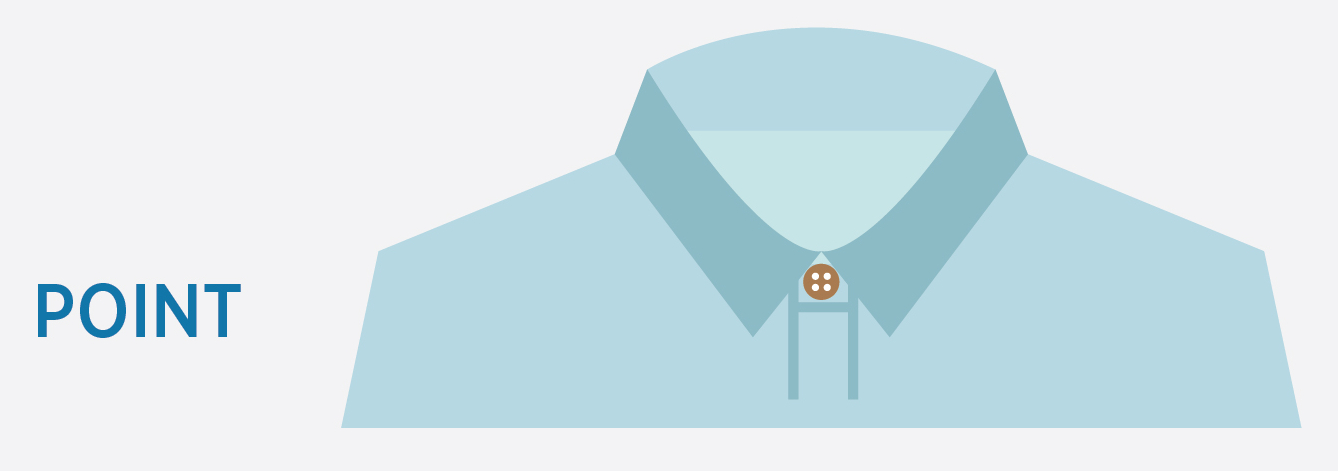
The classic point is the standard collar that most business shirts come in. The classic collar suits all neck, face types and shapes so if all else fails go the classic styled collar.

The spread and cut away collars both have a wider point to point length with the cut away collar pushing the limits as to how far collar points can be spaced. The spread and cut away collars suit long and thin faces. The wide collar points accentuate width of your neck and face.
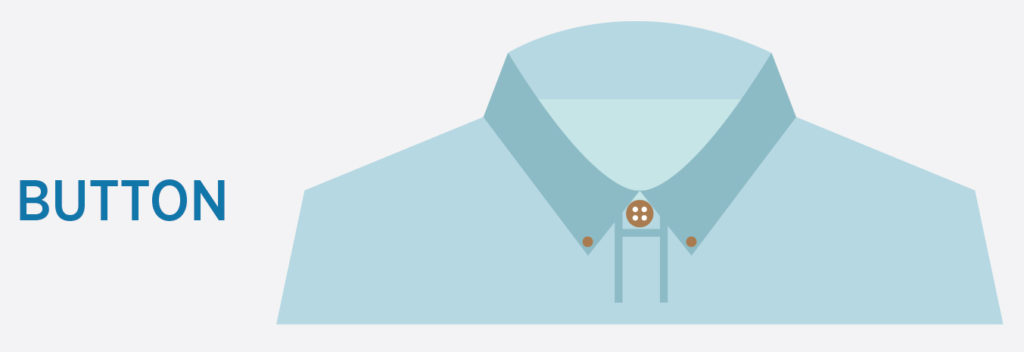
The button down is a relaxed casual style collar. For any semi casual or semi-formal event break out the button-down shirt. I would however stick to a more formal collar when matching business shirts with your suits.

The tab and bar collar is a golden oldie. Probably regarded as one of the more formal collars. The tab which fastens the shirt behind the tie will keep you looking good all day by pushing the tie knot forward and out. The bar collar works in the same way, the bar is placed and fastened through eyelets on the collar and goes from one collar point to the other and again pushing the tie not forward.

The wing collar is a formal black tie collar and worn with a bow tie.
Yoke
The yoke is the upper back shoulder part of your business shirt. Great quality shirts have will have a split yoke which has two pieces of material sewn together. The material will be sewn together on an angle and at the same time line up if the material is patterned. The benefit of the split yoke is a wider range of movement when leaning forward.
Buttons
Another sign of quality shirts. The mother of pearl button is widely known as the top-level button material. The mother of pearl button offers a beautiful deep color and shine along with durability withstanding the vigor of continual washing and ironing. An easy check to see if your mother of pearl buttons are genuine, try feeling the button for heat. Mother of pearl buttons are generally cooler to touch than plastic buttons. Some people use their tongue to test this due to your tongue being sensitive to heat.
You should expect a set of spare buttons attached to your business shirts. You will usual get a spare button for each size used in manufacturing. The high-quality business shirts will last you a considerable amount of time and like most of us every now and then a button disappears or breaks.
Button Holes
The correct button hole process is conducted during manufacturing so it’s not something you can tell when inspecting business shirts. Tailors will cut the hole first and then sew the button hole. What you can see by eye is tightly sewn button holes and a horizontally cut and sewn bottom button hole. This gives you a bit more room and button hole strength when you sit down.
Sewn Buttons
When the buttons are attached to the shirt they should be sitting evenly and firmly sewn to the shirt. A cross stich or X through the holes are desired and supply maximum support to the buttons when fastened.
Gusset
A reinforced side seem gusset is a must for quality shirts. The gusset is applied using a triangular piece of fabric which is folded and sewn into bottom of the seams on both sides of your dress shirt. This stops unnecessary wear or tearing of the side seems.
Cuffs
As with the collars a fused cuff is the way to go. A fused cuff offers a clean crisp look and the non-fused cuff is used for a more causal shirt. Cuffs in general whether French or barrel should be hand sewn. The cuffs are a difficult part of business shirt manufacturing and shows the skill of the tailor and manufacture.
There are 3 common cuffs used for business shirts and they are the French, barrel and cocktail cuff.
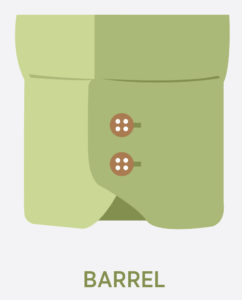
The barrel cuff is the most common cuff used. It works well in both formal and semi-formal situations. Barrel cuffs come with one, two or three button setups. The two-button setup is the way to go. A barrel cuff should have tapered edges that meet when the cuff is buttoned.
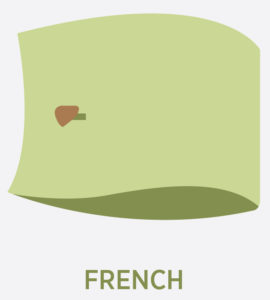
The French cuff or double cuff are twice as long as the barrel cuff and folds back on itself. Once folded back you drive the cufflink directly through the button hole from top to bottom through 4 layers of cuff fabric.
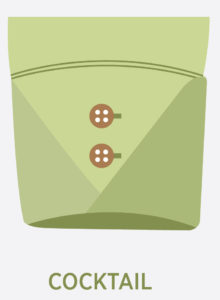
The cocktail cuff is similar to the French cuff. It folds back on itself stiffly and buttons up. There is no need for cufflinks for the cocktail or James Bond cuffs.
Button settings for each cuff can have slight variance. Most quality business shirts offer a button setting to allow you to wear a watch. Shirts used to only offer this option on the left hand as this was the watch hand. Nowadays dress shirts are often fitted with this button setup on both cuffs. So, you can have one cuff loosely buttoned to accommodate your watch.
Plackets
The placket takes on the load of the buttons down the center of the shirt. Having a placket doesn’t necessarily equate to a quality and workmanship, and it’s up to the wearer to decide their personal preference.
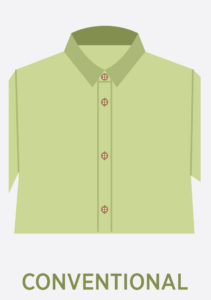
The normal or conventional placket is the most commonly used and gives the shirt an added lifespan and supports the button load.
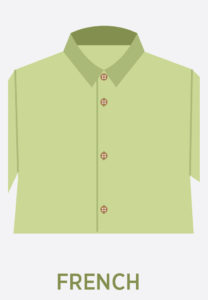
The French placket simply folds the fabric to the inside of the shirt so the stitching on the front is invisible.
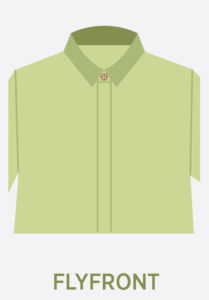
The fly placket has a line of material concealing the shirt buttons underneath. You will see a fly placket at black tie events when tuxedos are worn.
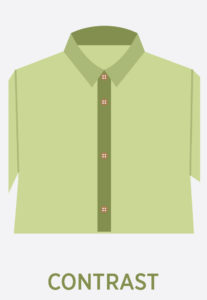
The contrast placket is a modern version. The placket in this case is a different fabric to the main shirt body. You may have seen people with similar fabric contrast used in the underside of a cuff.
Pleats
The pleats on a shirt are most often overlooked when purchasing an off the shelf quality dress shirt. The pleat was originally designed to aid movement through the shoulder and back. A skillful tailor or manufacture can apply a pleat through the back of the shirt while keeping access material to minimum. Having a good quality pleat is a sign of good shirt this adds considerable time to the manufacturing process and for that reason many of the cheaper business shirts skip this process.
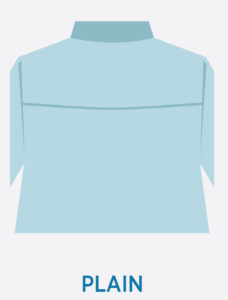
A plain pleat is standard straight fitting back. Having this gives you a minimal range of shirt movement through the back.

Side pleats are reserved for more formal dress shirts. They give a nice clean fit and are recommended for slim fit business shirts.
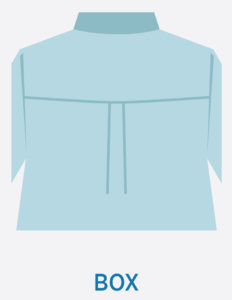
A box pleat is the most commonly used pleat
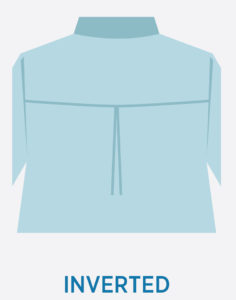
An inverted pleat is the just the opposite of the box pleat.
Shirt length
If you are wearing your business shirt exclusively with a suit and only tucked in, a slightly longer shirt is preferable. You are better off having your shirt completely tucked in without the worry of a wardrobe malfunction and becoming untucked. You can always try a shirt with less length and wear it untucked. This way you don’t look as formal but it can be a tricky look to pull off.
Sleeves
The sleeves should be sewn on last, positioned correctly to line up perfectly with the body of the dress shirt. Cheaper business shirts often have the sleeves sewn during the shirt manufacturing and in these cases the sleeves tend to not sit right when wearing the business shirt. When you look at the armpit of the dress shirt the seams should line up perfectly in a plus shape. This is a very easy spot to check shirt quality.
It’s important to match all great quality shirt aspects with what makes you feel the best. You being comfortable is the most import part of a great business shirt. Be wary of expensive dress shirts, shirt manufacturers nowadays are following these guidelines and supplying top quality and well priced shirts. With this guide, you can now judge a quality shirt based on the price yourself.
Good Luck
Embed This Image On Your Site (copy code below):
<div style=”clear:both”><a href=”http://www.jtwolf.net/spotting-great-quality-business-shirts”><img src=”http://www.jtwolf.net/wp-content/uploads/2016/11/hq-business-shirts-no-jt-jtwolfnet-logo.jpg” border=”0″ /></a></div><div>Courtesy of: <a href=”https://www.jtwolf.net”>JT Wolf</a></div>
